I lucked into my love of comics. The first bit of luck came from glancing at a comic rack in a supermarket and seeing the cover of something called “the Uncanny X-Men”. I wouldn’t have given it much thought, but I remembered the X-Men from reading my cousin’s copy of Son of Origins, years earlier (that was the second bit of luck), so, I decided to check it out. The third bit of luck was that the storyline in that issue happened to be smack dab in the middle of the “Dark Phoenix Saga”. After that, I was hooked. Perhaps it is nostalgia talking, but this particular story arc is probably the most significant storyline in the most significant comic book of its day, more or less the defining moment in that particular era of comics. The Dark Phoenix Saga, along with a shorter story arc that followed a couple months after called”Days of Future Past”, still resonate now.
Time passed. Somewhere along the line (high school, I think) I stopped reading comics. It wasn’t that I outgrew them. Far from it. It’s that the comics started to suck. With the Claremont/Byrne team gone, lots of mergers and weird (doomed) media deals, and most of the titles trying create yet another version of the X-Men, Marvel sort of lost its way (and I didn’t consider other comics companies worth reading even before that). My loss.
It wasn’t until meeting my high school friend JM in San Fransisco most of the way through college that I started reading comics again. She raved (justifiably, I discovered) about a comic called Sandman. While I haven’t become a comics guru or anything, I have read, and continue to seek, some of the better comics made. They’ve really grown up since I was 10. Maybe even more than I have.
A month or so ago, I was going on and on about comics to a friend of mine, and told him that I’d post some of my favorites. As I don’t have my nose buried deep in the comics scene, many of these will be old news to purists, but they’re worth reading anyway. These days, I don’t have the patience for single issues, so tend to buy trade paperbacks collecting a storyline instead. (Like I said, purists may cringe. I don’t care.)
Classics
Most of the graphic novels still on my shelf are the result of three authors: Neil Gaiman, Alan Moore and Frank Miller. The art of Alex Ross also makes quite a few appearances. Pretty much anything these guys do is a cut above other comics. This is one reason a lot of their work gets translated into (usually bad) movies. Here are some of my favorites:
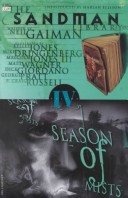

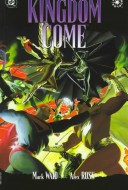


Season of Mists - 1992
This isn’t the first volume of Sandman, but it is as good of an introduction as any. If the X-Men were the adolescence of comic books, Sandman is almost certainly its maturity. Neil Gaiman’s writing in Sandman is seriously called literature in a number of places, and is one of the few comics worthy of serious annotation. Honestly, if you haven’t read any of the comics in this post, track down all of the volumes of Sandman first. Probably the best comic series ever.
Watchmen - 1986
You will hear more about Watchmen in the coming years, because it is being made into a movie. I suspect the film will be pretty bad, since there is no way to cram the coolness of this graphic novel into two hours. Watchmen is almost certainly Alan Moore’s best writing, which is saying quite a lot. It has also been annotated. A real strength of the book is (with one notable exception) a lack of superpowers, focusing a lot on how crazy you would need to be to dress in a costume and fight crime and, then, what happens when a real superhero shows up.
Kingdom Come - 1996
With possibly the best art in any comic book ever, Kingdom Come was one of the first comics to approach the idea of super heroes from the point of view of the mere mortals around them saying “do we really want these superpowerful beings around” and where the collateral damage from the fights of powered heroes is more palpable. Mix in Armageddon, heroes fighting, and a good story, and you have a winner.
V for Vendetta - 1982, 1988
I have mentioned this book before, and you may have seen the better-than-expected movie version (and, I thought, particularly well cast, for the most part). This book is fairly different from the film, and better in most ways. Like the film, it is fairly wordy, but contains many more literary, historical and artistic references. And, yes, I was surprised that the film didn’t raise more furor than it did. I’m not sure what to make of that.
Uncle Sam - 2000
Being politically loaded, this book changes each time you read it. It features a Uncle Sam as a homeless derelict, lost in many flashbacks of the nation’s past. It’s the type of thing where two different people read it entirely differently. Plus, it looks great. Packed with historical references, it’s annotations are more useful than most. This book also marked the only time I’ve ever been tempted to purchase the original art of a comic image, but it looks like someone else beat me to it.
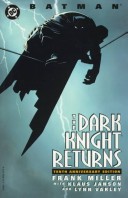
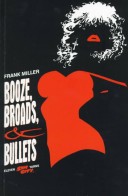
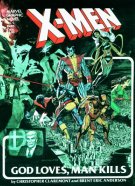
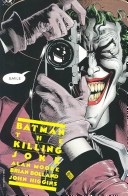
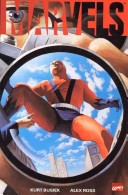
Batman: The Dark Knight Returns - 1986
It has taken a long time for the film version of Batman to catch up with what was being done with the character in the comics over 20 years ago. The upcoming film with the similar name is not related to this book, which, along with Watchmen, turned the comics industry on its head. This was the book that turned Batman into a darker, more brooding character, in a tale filled with moral ambiguity from all sides.
Sin City: Booze Broads and Bullets - 1991-1997
Frank Miller’s Sin City covers a number of volumes, but I think I like this one best. It’s more like a collection of short stories, all told in the stark noir style the series made famous. The first film did an interesting job of replicating exact panels from these books, which are sort of fun to look for.
God Loves, Man Kills - 1981
This may not be as well known as some of the others, but is worth picking up if you can find it (particularly in its original format). It’s one of the first comics I read that really dealt with religion and prejudice. It’s also fairly gorgeous. I often wonder if it would have been released at all had it come along a bit later into the Reagan years.
Batman: The Killing Joke - 1988
This book makes the list because it is the first time I read a comic about an insane evil villain where I really believed the villain was insane and evil. It also was the first I remember that mentioned Batman himself also needing to be insane to do what he does.
Marvels - 1994
Marvels retells a number of classic Marvel stories from a much different perspective, and killer art by Alex Ross. The “mortals suffering on the sidelines” motif in Kingdom Come originated here, where it is more pronounced, but also more hopeful. It is sort of a stroll through the day of a normal human in a superhuman world.
New(ish) Stuff
Lately, I’ve been reading sort of on and off, mostly off. I’ve liked a lot of what I’ve seen, though. Such as:
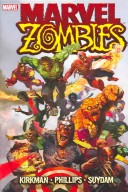




Marvel Zombies - 2007
Have you ever wondered what would happen if heroes like the Hulk, Iron Man and Wolverine became flesh-eating zombies? I haven’t either, but Ralph Macchio has. No, not that Ralph Macchio, in spite of what the writer might have you think. This five-issue miniseries takes place in an alternate universe, and manages to be be jaw-dropping, funny and disgusting all at the same time. Not that intellectual, but fun. There’s also a sequel which pulls in the Evil Dead franchise. Unrelated to this series is another, which I haven’t read yet, but want to: Zombies vs. Robots vs. Amazons.
1602 - 2007
Another alternate universe story, this one exploring what the world would have been like if the “silver age” heroes of the Marvel universe came into being in 1602 AD. Dr. Strange, for example, is court sorcerer to Elizabeth I. Mythology making as only Gaiman can deliver.
Y: The Last Man - 2003
Y, a reference to the lead character as well as the male chromosome, is a long running series about a world where all the male mammals, humans included, suddenly drop dead. All except Yorick, an unexceptional guy, and his monkey. It’s a good concept, well executed, with great writing.
Superman: Red Son - 2004
In the 1930’s, suppose Superman landed in Stalinist Russia instead of a field in Kansas. Red Son explores this idea, and the result is not what you might expect. For one thing, Superman is much less of a dick than usual. This is not the first alternate location for Superman either. The first one I remember is a short story that has him landing in Germany, called “Übermensch!” by Kim Newman (excerpt). There was also Superman: True Brit, co-written by John Cleese (yes, that John Cleese) and drawn by John Byrne, which I have not read.
Justice - 2007
Justice gives Alex Ross a huge canvas and cast of heroes and villains to work with. The story is also pretty good, though it starts better than it finishes. It’s also a little pricey and oddly packaged (three different volumes).

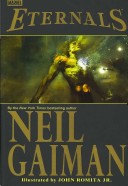

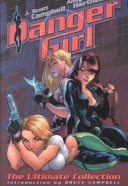

Inhumans - 2000
One of the many bizarre products of the illustrious mind of Jack Kirby (and probably a number of chemicals), the Inhumans have always seemed to occupy a strange area in the Marvel universe. I frankly, never really cared about them before reading this. The story is decent and the art is great, making particularly good use of black pages.
Eternals - 2007
Another concept from the mind of Kirby, the Eternals came much later than his Inhumans did, and were gods among men. His series featuring them didn’t live long, and languished (though had a fairly long reach in the mythology of Marvel). The Eternals were sort of a C-list title, frankly. But that may have changed with this book, the story picked up by Neil Gaiman, manipulating and inventing mythology as only he can.
Secret War - 2006
Not to be confused with Secret Wars, a miniseries from decades ago, this is a shades-of-gray, post-special-ops type story, with both emotional and political fallout. It’s also a painted comic, a style I like. The concept is better than the execution, but it is still enjoyable. Along with 1602, it made me like Nick Fury
Danger Girl - 2001
This is not new, but I only read it recently. Danger Girl is designed to work like an episodic pulp action melodrama, where all the characters are unapologetically gorgeous or hunky. It’s sort of mash up of Indiana Jones, James Bond and Baywatch, where the characters are drawn suspiciously like particular actors. It is definitely not literature, but lots of fun. Plus, with an into by Bruce Campbell (yes, that Bruce Campbell), how can you go wrong.
Earth X - 2005
Like Danger Girl I only read this recently. Earth X attempts to tie all the weird mythologies of the Marvel universe into a single unit. It almost even succeeds, though it takes a few, much more contrived sequels (stay away from those). One of the things I like about it is that, like Red Son, it is not afraid to explore the political consequences of superheroes. Beings with super powers probably really would take over countries and so on.
I may add to this post periodically, but that should do for now.